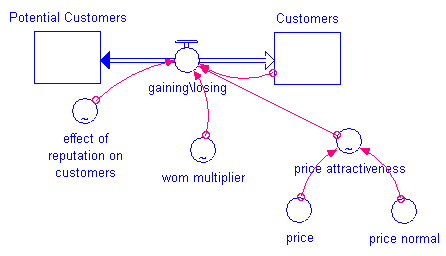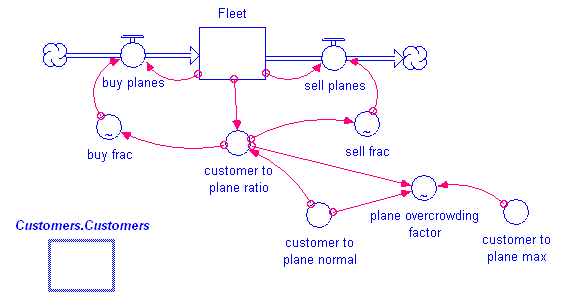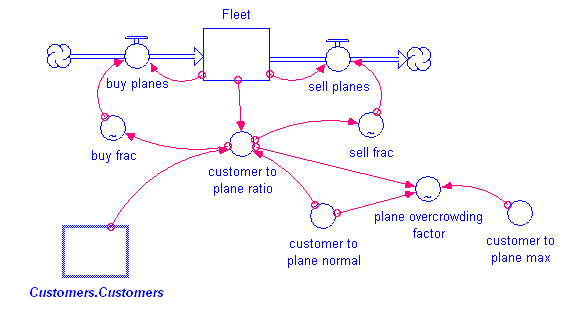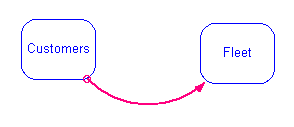In a model that contains one or more modules, navigate into a module that contains a variable whose value will be output to another module. In the following example, the model contains two modules: Customers and Fleet.

In this example, the Customers module contains a stock called "Customers" that will serve as an input to the Fleet module. We'll begin by navigating into the Customers module:

Click the center of the variable that will serve as a module input to another variable or module. The cursor changes to a small version of the ghosted building block's icon.
In this example, we'll be defining the "Customers" stock as an input to the Fleet module, so we'll click the center of the "Customers" stock and the cursor will change to a small stock icon.
Click anywhere on the module diagram to place the ghosted variable. The ghosted variable will appear and its name will include the name of the module that's providing the value. In our example, the ghosted variable is the "Customers.Customers" variable (that is, the "Customers" stock from the Customers module):

Use a connector to draw the connection between the new module input and the variable it provides an input value to. In our example, we'll draw a connection between the new "Customers.Customers" variable and the "customer to plane ratio" converter:

If you right-click the "Customers.Customers" variable and choose the Module command, you'll see that it's been automatically set to Accept Input. When you navigate back out of the module, you'll see the connection between the modules has been automatically drawn:

If you navigate into the module that's providing the input value to the module (the Customers module in this example), right-click the variable that you ghosted into the other module, and choose the Module command, you'll see that it's been automatically set to Provide Output.